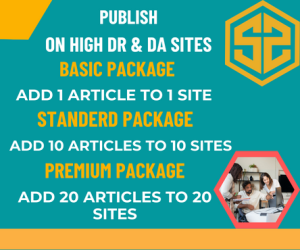Here’s a comparison of CNC laser cutting machines (for sale), covering types, specs, prices, trade-offs — to help you decide what’s right. If you tell me what you want (material, thickness, budget, local service, etc.), I can narrow it even more. For more information please visit trevisan milling centres
Key Factors to Compare
Before comparing specific machines, here are the main specs & features you should compare and understand:
| Feature | Why it matters |
|---|---|
| Laser Type (CO₂, Fiber, Hybrid) | Different laser sources in terms of efficiency, cost of running, maintenance, material compatibility. Fiber is good for metals; CO₂ often for non-metals (wood, acrylic, etc.). |
| Laser Power | Determines how thick a material you can cut, and how fast. Higher power = thicker cuts & faster operation, but higher cost. |
| Work Area / Bed Size | Large sheets need bigger bed; some machines cut only small panels. |
| Speed & Accuracy | Cutting speed, acceleration, repeatability. If you need fine detail, tight tolerances: look for higher precision. |
| Cooling & Support Systems | Cooling (water, air), gas assist, filtration (for CO₂ fumes) are essential. Also, quality of optics, laser tube/source, spare parts availability. |
| Control & Software | Type of controller (Ruida, Cypcut, others), what file formats it supports, ease of use. |
| Cost (Initial + Running) | Initial purchase cost + running costs (electricity, gas, maintenance, spare parts). Also warranty & local support. |
Price Ranges (General + Pakistan Context)
What machines cost depends heavily on power, size, and quality. Some benchmarks:
- In Pakistan, for example, a CNC Laser Engraver can cost between Rs 250,000 – Rs 750,000 for smaller / mid-range models.
- Industrial fiber laser cutters (bigger sizes, higher power) are much more expensive — often in millions of rupees depending on specs.
- On global sites (Alibaba etc.), fiber laser cutting machines for cutting metal sheets (500W-6kW) sell in $8,000 – $20,000+ depending on size & brand.
Comparison: CO₂ vs Fiber vs Hybrid
Here’s a quick comparison of the different types:
| Feature | CO₂ Laser | Fiber Laser | Hybrid / Mixed Machines |
|---|---|---|---|
| Best materials | Wood, acrylic, leather, some plastics, non-metals | Metals (steel, aluminum, stainless steel, brass etc.), thin to medium; also some non-metals though cutoff | Designed to do both to some extent — good flexibility |
| Efficiency / Running Cost | Lower cutting efficiency on metal; tubes degrade; higher maintenance; need replacement tubes | More efficient on metal; longer life for source; lower gas consumption per metal cut; generally lower running cost for metal work | Compromise: higher cost, may need extra gas or features; more complexity |
| Speed & Power | Lower power cost; slower with thick metals; good at non-metal work | Can get high-power units with high speed on metals; often better for thick sheets | Slower than pure fiber on metal, may not reach top firmness/precision of specialized machines |
| Initial Cost | Usually less for similar bed size for non-metal work | Higher, especially high power fiber laser machines | Possibly more cost for hybrid, design may be more complex; but if you need both metal and non-metal cutting, hybrid might save buying two machines |
What to Choose Based on Needs
Here are some guidelines depending on what your priorities / use-case are:
| Use Case | Best Choice | Key Specs to Look For |
|---|---|---|
| Small workshop / hobby (acrylic, wood, leather) | Low-/mid-power CO₂ laser (40-150 W), small/medium bed size, enclosure & safety features | Good cooling, air assist, decent optics, reliable controller; low cost of spare parts |
| Cutting metals (steel, aluminium) in small-to-medium thickness (1-5mm) | Fiber laser, ≥1 kW power (depending on thickness), decent bed size for your sheet size; good gas assist | Check cut quality, repeatability, beam quality, power stability, cooling; local support for optics and spare parts |
| Large production (metal sheets, high throughput) | High power fiber laser (2-6 kW or more), large bed (e.g. 3×1.5 m, 4×2 m etc.), robust frame, good support / warranty | High speed motion systems, precision, high grade components, good infrastructure (power, extraction, safety) |
| Mixed materials & flexible work | Hybrid laser or separate machines; or machines that support both fiber + CO₂ or different heads | Switchable heads or dual‐mode features; flexibility in software; good support |
Trade-Offs & Pitfalls
- After-sales service & parts: A cheaper machine might save you money initially, but if spare parts, optics, tubes (for CO₂), or laser sources (for fiber) are hard to get locally (or expensive to ship), it adds up.
- Power supply quality: High-power lasers need stable and clean power; voltage fluctuations can damage sensitive parts.
- Safety: Especially with fiber lasers (class 4), you need proper enclosure, ventilation, eyewear, cut-off interlocks etc. CO₂ lasers also need good fume extraction.
- Real vs rated power: Sometimes advertised power is optical vs electrical, or peak vs continuous. Check real cutting capability, not just nominal watts.
- Material handling: Bigger sheets = heavier workpieces, need robust bed, maybe loading systems. Also gas (oxygen, nitrogen) for cutting metals cleanly.
- Training & software: Even with a great machine, you need good operators. Ease of use, good software, documentation help.
